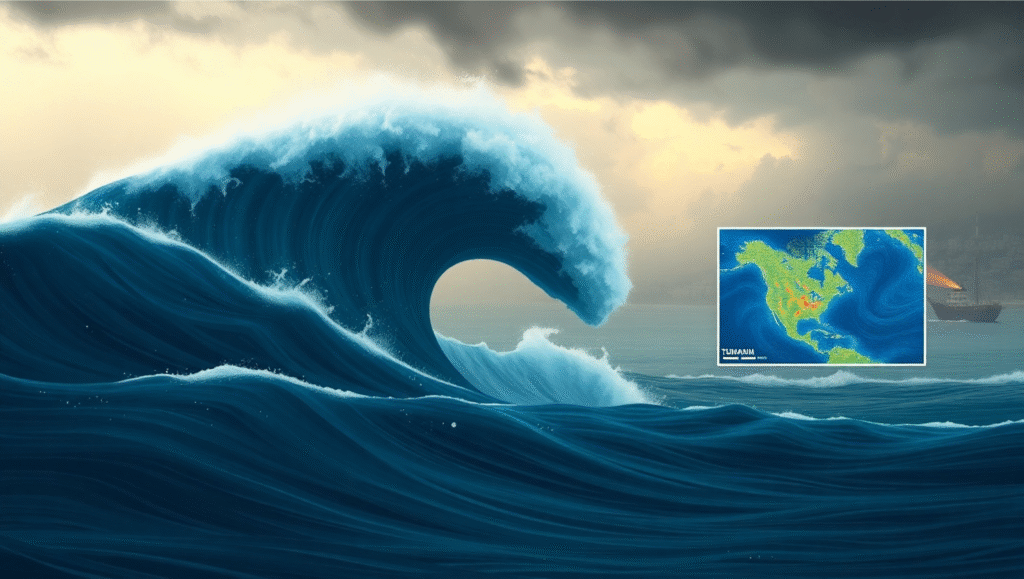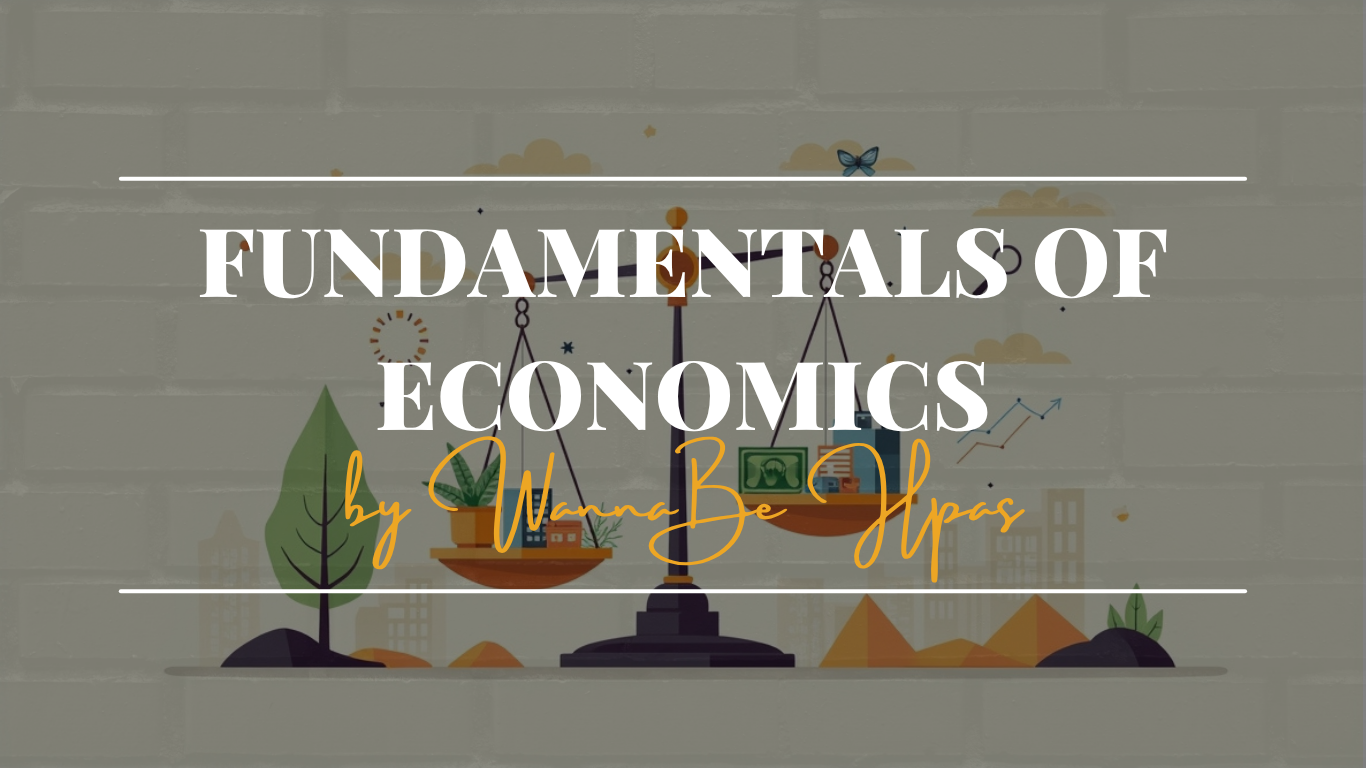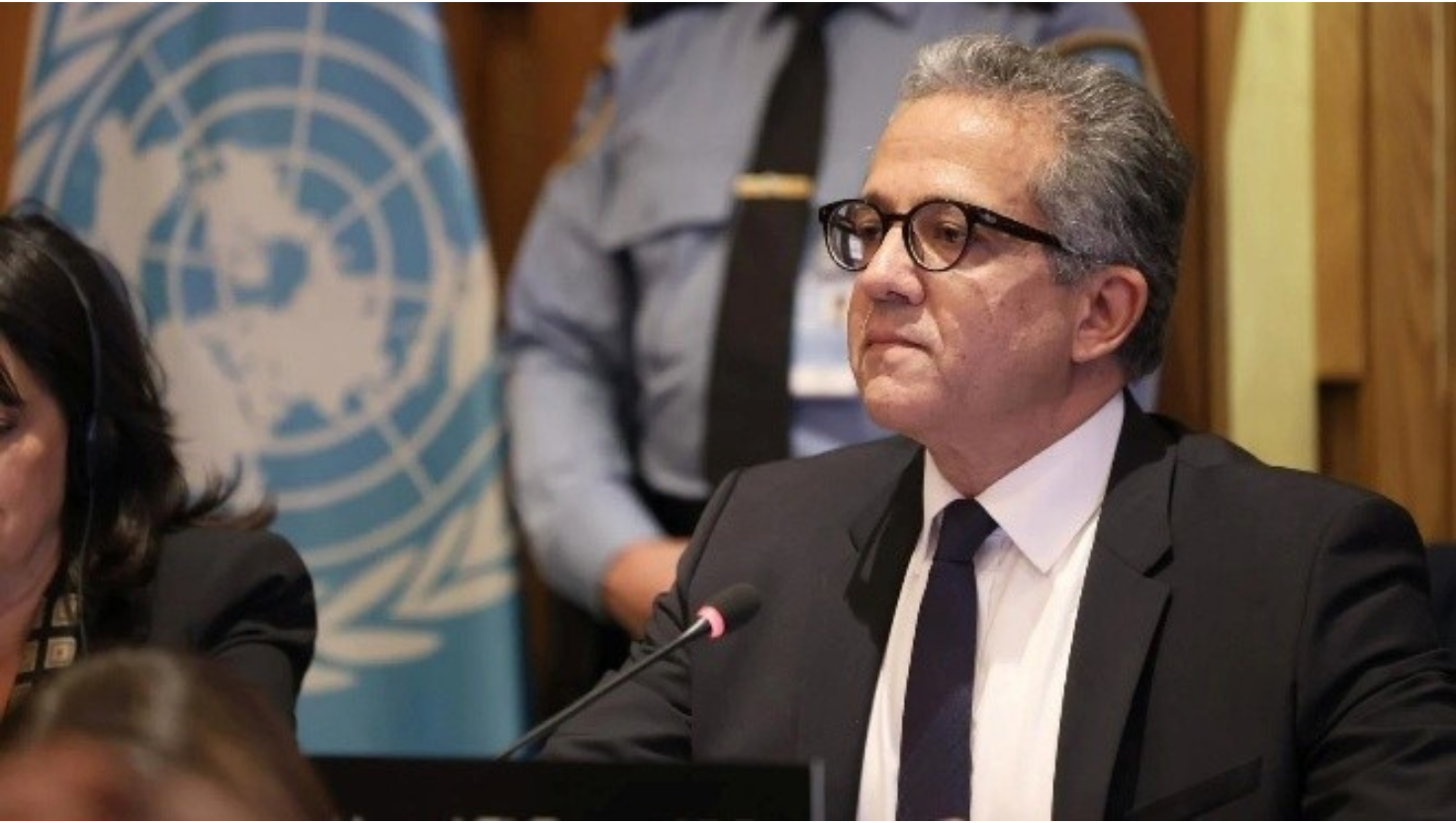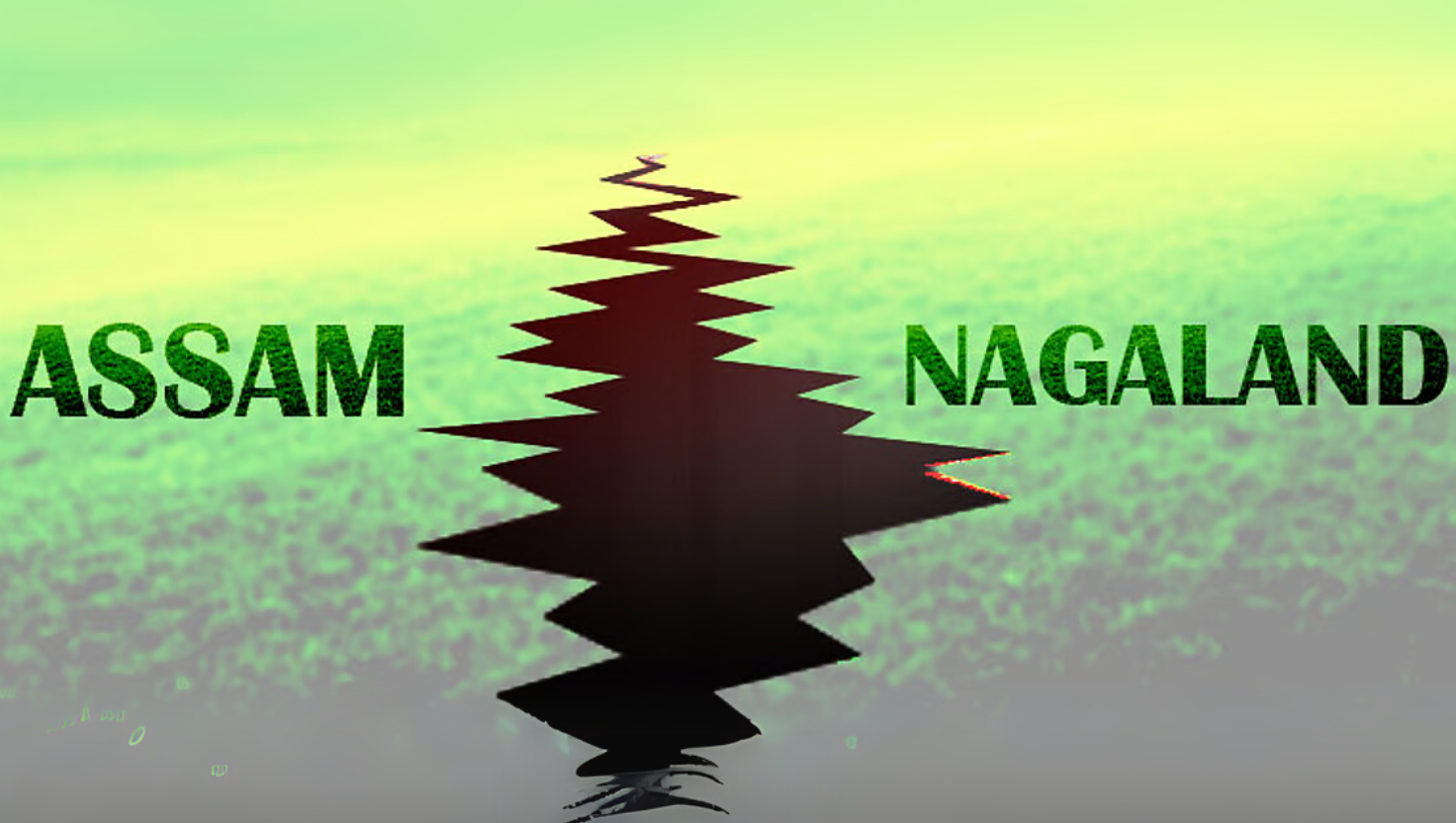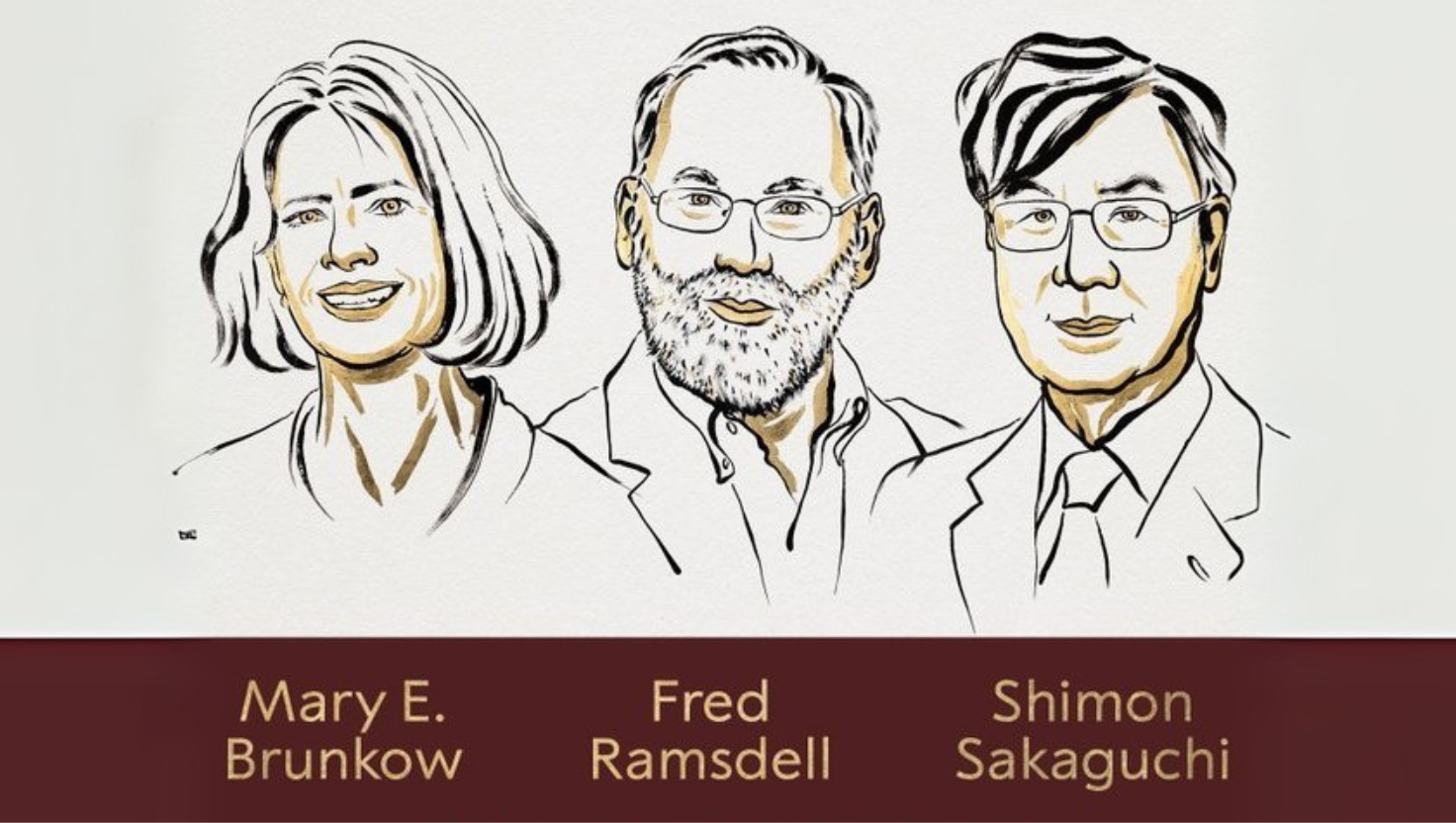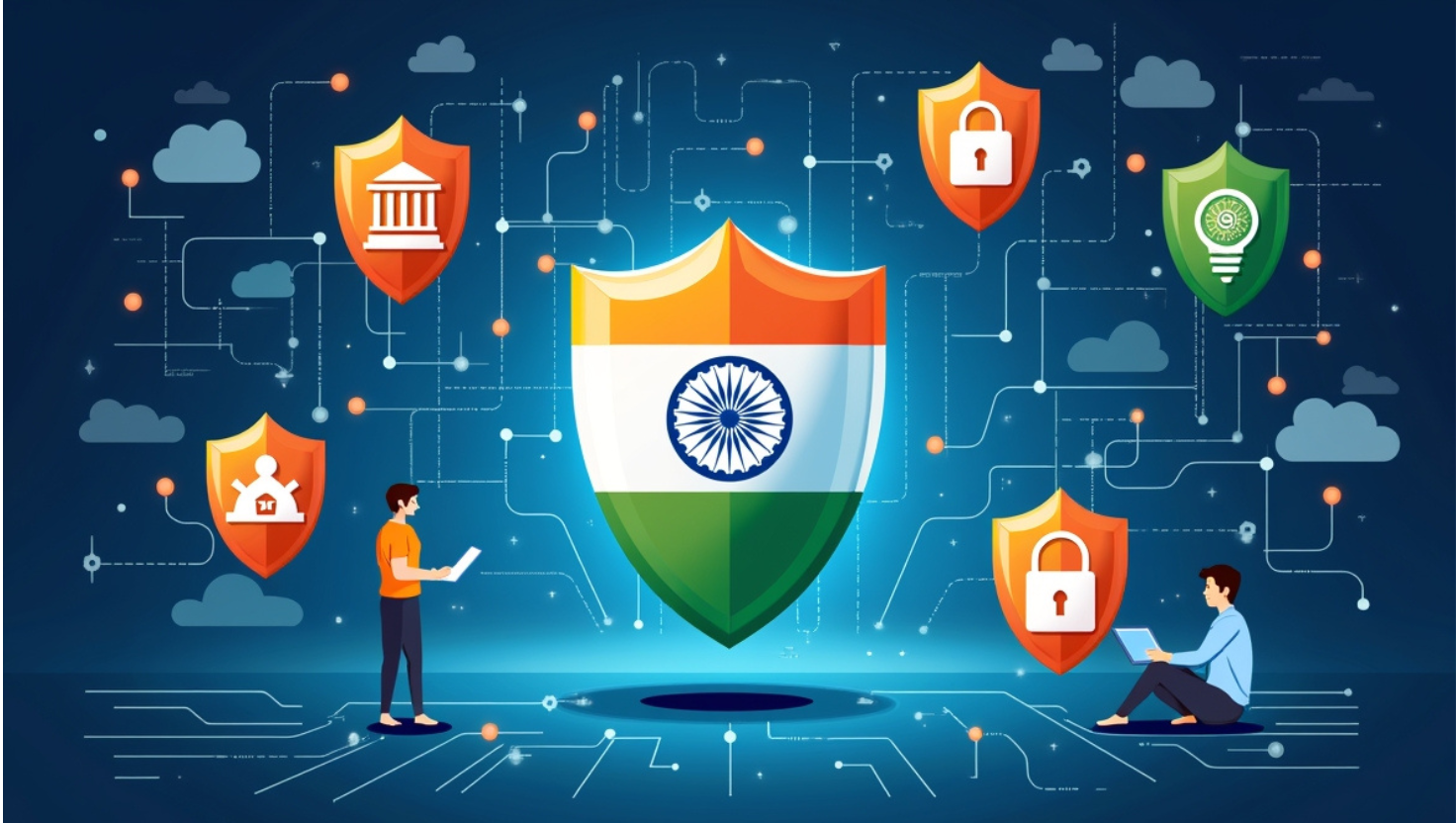Tsunamis : Causes, Impact & Preparedness
Syllabus: Geography (UPSC GS I)
Source: NDTV
Recent Context
A powerful earthquake of magnitude 8.8 struck Russia’s Kamchatka Peninsula, triggering a tsunami. The waves affected coastal areas in Russia and Japan, with alerts issued as far as Hawaii and New Zealand.
Understanding Tsunamis
A tsunami is a series of large sea waves caused mainly by sudden movements under the ocean, like earthquakes or volcanic eruptions. These waves move quickly across oceans and cause major destruction when they hit coastal areas.
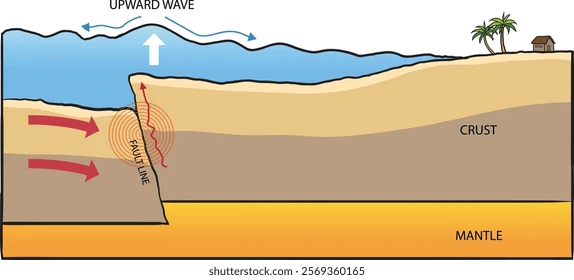
How Do Tsunamis Form?
1. Triggering Event (Seafloor Disturbance):
- A strong underwater earthquake, volcanic activity, or landslide displaces the ocean floor.
- This shifts large volumes of water, disturbing the sea surface.
2. Wave Generation:
- Displaced water creates waves that spread in all directions.
- In deep oceans, they travel up to 800–900 km/h but remain low in height (~30–50 cm).
3. Drawback Effect (Warning Sign):
- As the tsunami nears land, the sea may suddenly recede.
- This is the trough of the wave arriving before the crest and can mislead people into thinking it’s low tide.
4. Wave Amplification Near Shore:
- In shallow waters, the waves slow down and grow taller.
- Heights can increase from 1 metre to over 10 metres.
5. Coastal Impact:
- Massive waves crash into the shore, flooding several kilometres inland.
- They sweep away people, buildings, and vehicles.
- The retreating waves carry debris and people back to sea, increasing damage.
Key Features of Tsunamis
- Long Wavelength: Can stretch up to 200 km between wave crests.
- High Speed, Low Height (in deep water): Travel like jet planes but are barely noticeable at sea.
- Series of Waves: Tsunamis come in multiple waves over hours; the first is rarely the largest.
- Silent at Sea, Destructive on Shore: Often go unnoticed in deep water but become lethal at coastlines.
Impacts of Tsunamis
1. Human Casualties and Health Risks:
- Cause massive loss of life (e.g., 2004 Indian Ocean tsunami).
- Injuries due to drowning and debris impact are common.
2. Infrastructure Damage:
- Destroys homes, ports, bridges, and even nuclear plants.
- Disrupts transport and economy in coastal regions.
3. Environmental Degradation:
- Saltwater floods croplands and wetlands.
- Coastal and marine ecosystems suffer long-term damage.
4. Service Disruptions:
- Cuts off power, water, roads, and communication networks.
- Delays rescue and relief efforts.
5. Secondary Hazards:
- Earthquake-triggered tsunamis may cause fires, chemical leaks, or landslides.
Tsunami Warning Systems
India’s Early Warning Framework
- Seismic Sensors: Monitor global earthquakes round the clock.
- DART Buoys: Detect deep-sea pressure changes in real time.
- Tide Gauges: Confirm wave height and land arrival.
- Alert Dissemination: INCOIS informs NDMA, media, and public via SMS, sirens, radio, and satellites.
Global Coordination
- UNESCO-IOC Role: Regional centres like PTWC and JMA issue alerts.
- Global Networks: Thousands of seismic stations support early quake detection.
- Satellite & Radar: Identify sea-level changes and track wave movement.
Conclusion
Tsunamis are infrequent but extremely dangerous. Effective early warning systems, international cooperation, and community awareness are vital to reduce their impact. India’s preparedness, through INCOIS and global coordination, plays a crucial role in disaster risk reduction.

